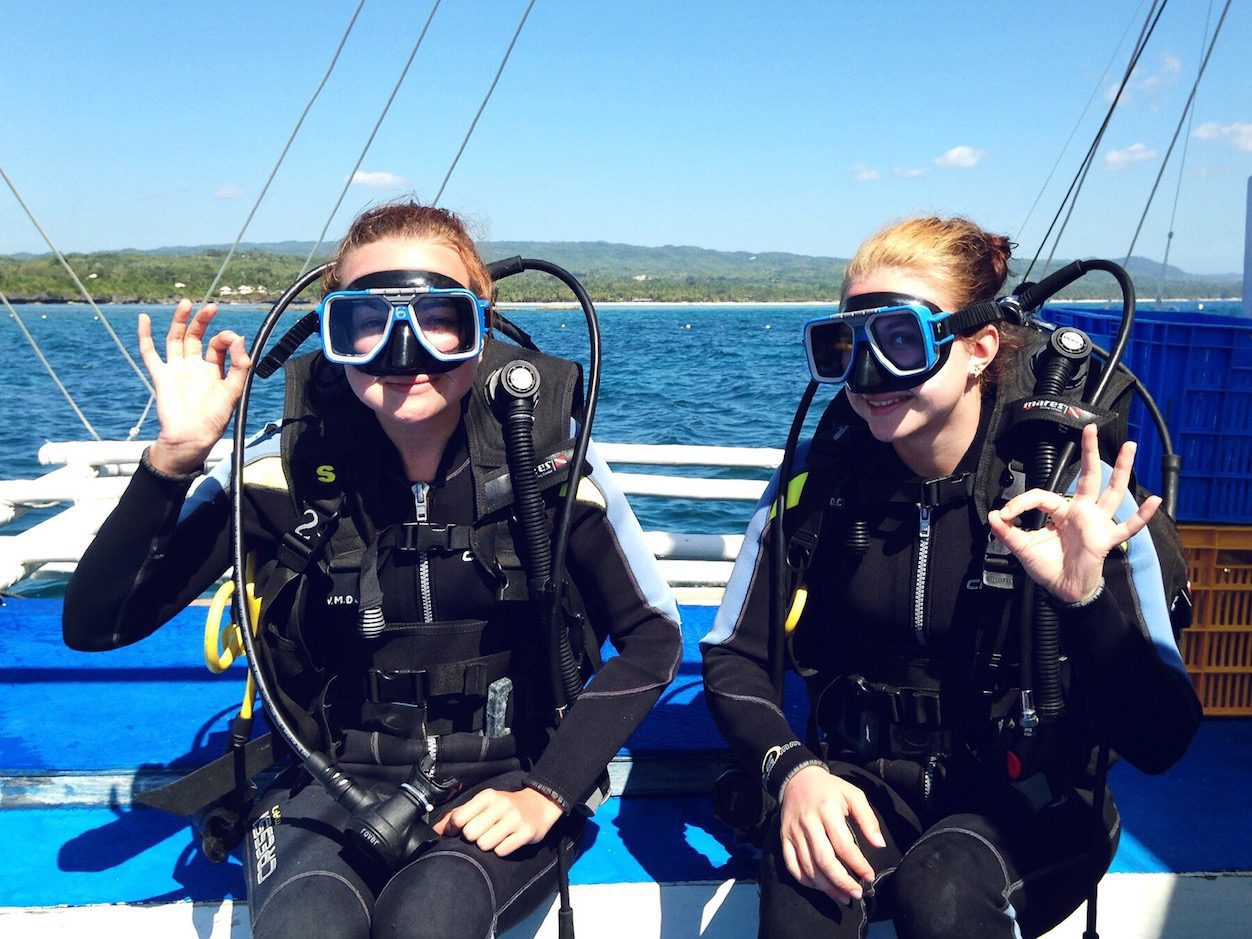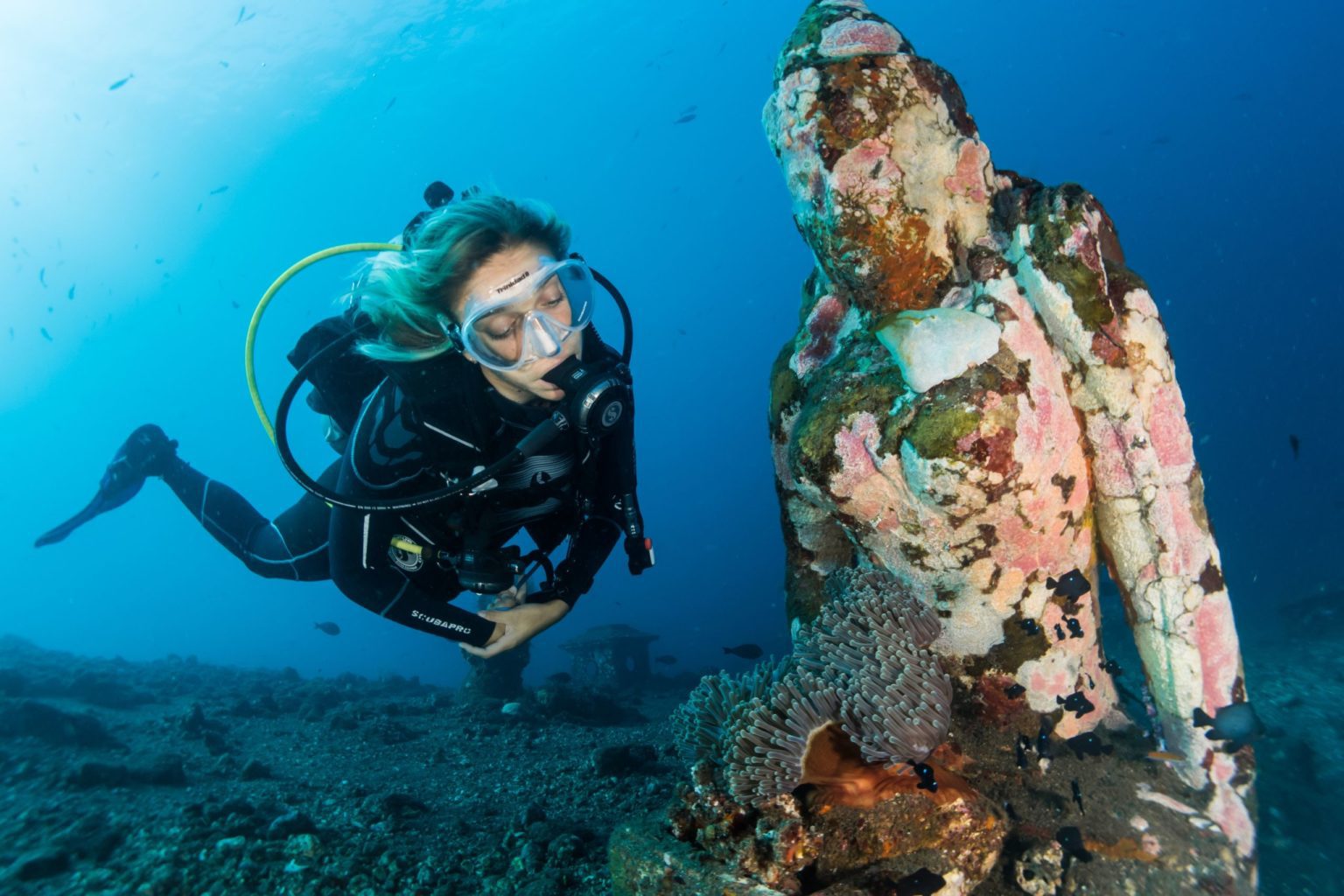The ever-growing popularity of scuba-diving is a great way to spread knowledge and appreciation for reef ecosystems, but amidst the many threats reef systems face, it may be easy to overlook divers themselves as a growing pressure upon them. Given that roughly one million certifications are issued every year, it’s important to instil good skills and attitudes for each one of us to minimize our impact. We’re hoping our infant son can enjoy the reefs as we do today, so please be a good “reef-friendly diver” and follow these tips!
- Use Reef-Safe Sunscreen
 A study in 2015 found that minuscule amounts of type sunscreen can be extremely damaging to coral. The offending ingredients, oxybenzone and octinoxate, are present in over 70% of sunscreens currently on the market. Some areas such as Hawaii and Bonaire have even decided to ban the sale of such creams. Our recommendation? Wear a rashguard rated for sun-protection and check out our review of reef-safe sunscreens.
A study in 2015 found that minuscule amounts of type sunscreen can be extremely damaging to coral. The offending ingredients, oxybenzone and octinoxate, are present in over 70% of sunscreens currently on the market. Some areas such as Hawaii and Bonaire have even decided to ban the sale of such creams. Our recommendation? Wear a rashguard rated for sun-protection and check out our review of reef-safe sunscreens.
- Boy-Oh-Boy, Work On That Buoyancy!
If we were all flopping around on the reef without buoyancy-control, the fish would be left with nothing but shattered homes of dead white coral. You really want to nail this skill to be able to move with grace. Take note of changing conditions like when you go from fresh- to salt-water or try a different thickness wetsuit – you may need to adjust your weights. Check your buoyancy at the surface – if you haven’t mastered this, ask your dive buddy or guide for tips!
- Don’t be a ‘Drag’
 As you do your buddy-check before entering the water remember to check your BCD/buoyancy, Weights, Releases, Air, Final OK. What’s that spell? BWRAF! Easy to remember, right? The important thing is to make sure your equipment is secured, and that nothing is loose. Many divers forget to secure their SPG (submersible pressure gauge) or fail to tuck it away properly when checking their air. You don’t want stuff dangling outside your field of vision or else it might be dragging on the reef destroying pretty sea-fans!
As you do your buddy-check before entering the water remember to check your BCD/buoyancy, Weights, Releases, Air, Final OK. What’s that spell? BWRAF! Easy to remember, right? The important thing is to make sure your equipment is secured, and that nothing is loose. Many divers forget to secure their SPG (submersible pressure gauge) or fail to tuck it away properly when checking their air. You don’t want stuff dangling outside your field of vision or else it might be dragging on the reef destroying pretty sea-fans!
- Get Your Kicks In and Stay “Trim”
 When we say “be trim”, we’re not telling you to go exercise to trim the fat (side note: swimming is great exercise). No, we’re telling you to adjust your body’s orientation in relation to the direction you’re swimming in order to reduce resistance. Most of the time, we should be moving about in a horizontal position. If your shoulders are up and you’re bicycling along in the water, you’re liable to be kicking-up silt from the bottom or, at worst, kicking delicate corals below! If you’re moving forward horizontally (ie. “head-first”), you’ll likely want to use the “frog-kick” which helps maintain a horizontal profile and concentrates propulsion behind you (as opposed to below you). Similarly, when you drift too close to the reef, you’ll want to gracefully “back up” using only your fins: trying practising doing a “frog kick” in reverse. There are many types of kicks, so don’t be shy to ask for help – or a good demonstration!
When we say “be trim”, we’re not telling you to go exercise to trim the fat (side note: swimming is great exercise). No, we’re telling you to adjust your body’s orientation in relation to the direction you’re swimming in order to reduce resistance. Most of the time, we should be moving about in a horizontal position. If your shoulders are up and you’re bicycling along in the water, you’re liable to be kicking-up silt from the bottom or, at worst, kicking delicate corals below! If you’re moving forward horizontally (ie. “head-first”), you’ll likely want to use the “frog-kick” which helps maintain a horizontal profile and concentrates propulsion behind you (as opposed to below you). Similarly, when you drift too close to the reef, you’ll want to gracefully “back up” using only your fins: trying practising doing a “frog kick” in reverse. There are many types of kicks, so don’t be shy to ask for help – or a good demonstration!
- Get Feedback!
 A reef-friendly diver is a combination of having the right attitude – to be respectful of marine life – and of having the right skills. Students paired with a good instructor generally go on to be awesome ambassadors of the ocean; yet too often we find divers – sometimes highly-certified – who are harmful to the reef and they don’t even know it! Giving and receiving feedback can sometimes be confrontational and difficult – especially at-depth and on holiday. At SeaCrush, we’ve developed a network of divers who care about improving not only themselves but also dive buddies in their social circles and beyond. That’s why we created an anonymous review system which uses a scoring algorithm to approve applicants as “reef-friendly” (good job, you!), or retain applicants as “pending approval” whereby we send gentle reminders for why the reef is important and what it means to be a reef-friendly diver.
A reef-friendly diver is a combination of having the right attitude – to be respectful of marine life – and of having the right skills. Students paired with a good instructor generally go on to be awesome ambassadors of the ocean; yet too often we find divers – sometimes highly-certified – who are harmful to the reef and they don’t even know it! Giving and receiving feedback can sometimes be confrontational and difficult – especially at-depth and on holiday. At SeaCrush, we’ve developed a network of divers who care about improving not only themselves but also dive buddies in their social circles and beyond. That’s why we created an anonymous review system which uses a scoring algorithm to approve applicants as “reef-friendly” (good job, you!), or retain applicants as “pending approval” whereby we send gentle reminders for why the reef is important and what it means to be a reef-friendly diver.
Approved SeaCrush members are proud to be rated “reef-friendly” and share their badge on social media to encourage other divers to join and have a positive impact on the reef-ecosystems. So, please create your profile at SeaCrush.com to promote reef-friendly diving, and if you’d like to meet more like-minded divers, join a members-only scuba diving trip in Raja Ampat North and South (Misool) in January 2022!
About the Author: Isabelle Barbier
 Isabelle is co-founder of SeaCrush.com, a travel agency for social-good offering trips to the best diving destinations for anyone accepted to their network of reef-friendly divers. From the Caribbean to French Polynesia, Isabelle has travelled to more than 60 countries and scuba dived in many of these. Isabelle is an Open Water Scuba Instructor, and has volunteered for marine conservation NGOs in Raja Ampat and East Timor.
Isabelle is co-founder of SeaCrush.com, a travel agency for social-good offering trips to the best diving destinations for anyone accepted to their network of reef-friendly divers. From the Caribbean to French Polynesia, Isabelle has travelled to more than 60 countries and scuba dived in many of these. Isabelle is an Open Water Scuba Instructor, and has volunteered for marine conservation NGOs in Raja Ampat and East Timor.








